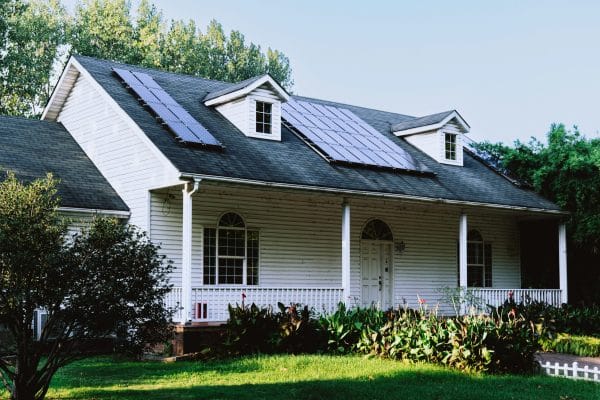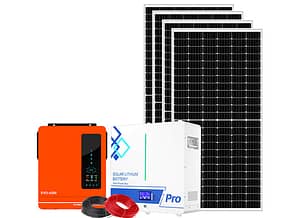In recent years, the UK has faced an uncomfortable truth: the energy grid isn’t as reliable as many once assumed. Between ageing infrastructure, climate-driven storms, and growing energy demand, the risk of blackouts is on the rise. This uncertainty is pushing more households to rethink how they prepare for power cuts and emergencies.
One solution standing out in these conversations is home battery storage UK. More than just a modern gadget, it has quickly become a central pillar in many families’ emergency preparedness plans. These systems don’t simply provide backup—they add resilience, reduce reliance on fossil fuels, and offer peace of mind when the unexpected happens.
Backup power for essential home functions
When a storm rolls in and the lights flicker out, most households immediately think of their essentials: refrigeration for food, heating or cooling systems to maintain safe indoor conditions, and the ability to charge communication devices. For some families, uninterrupted power for medical equipment is absolutely critical.
This is where home battery storage shines. Unlike fuel-powered generators, batteries operate silently, with no need to stockpile fuel or worry about carbon monoxide poisoning. A properly sized system can keep vital circuits running—fridges, sump pumps, Wi-Fi routers, and even phone lines that rely on VOIP.
The benefit is not just about comfort; it’s about safety. The ability to keep communication lines open in an emergency ensures households stay connected with loved ones and, when necessary, emergency services.
Grid resilience and community-level benefits
The power of battery storage goes beyond the walls of a single home. At a community level, interconnected systems create what experts call “virtual power plants” (VPPs)—networks of batteries that can stabilise and support the grid during stress.
Take Puerto Rico as an example: around 10% of homes with solar panels and batteries form a 69,000-unit energy network. This distributed system acts like a small natural gas turbine, supplying about 2% of the island’s electricity needs during outages. It’s been activated multiple times, reducing the length and severity of blackouts.
Closer to home, the same principle is taking shape in parts of the UK. Households with home battery storage UK not only protect themselves but also contribute to wider grid stability. When integrated with local microgrids, these systems can collectively prevent blackouts during peak demand or extreme weather events.
Efficiency over traditional backup options
Traditional backup power often comes in the form of diesel or petrol generators. While effective, they’re noisy, high-maintenance, and emit harmful fumes. Batteries, on the other hand, are:
- Silent: No disruptive noise during operation.
- Fuel-free: No need to queue at petrol stations during emergencies.
- Low-maintenance: With fewer moving parts, they require little upkeep.
- Safe: No carbon monoxide risks or fuel storage hazards.
Pair a home battery with solar panels, and the advantages compound. Once installed, the sun effectively becomes their energy source. While the initial investment may feel significant, households can eventually offset costs through lower bills and ongoing savings. In the long run, backup power becomes virtually free.
Broader community and systemic advantages
The wider benefits of adopting home battery storage extend well beyond individual homes. Communities gain resilience, especially those vulnerable to long power cuts. For instance:
- Critical services like healthcare centres and local shelters can remain operational during outages.
- Distributed energy storage reduces transmission losses, making power delivery more efficient.
- Economic resilience improves as investment in battery storage stimulates local job growth and tax revenues.
Even at the utility level, widespread storage adoption helps balance electricity prices, smooth demand peaks, and support grid recovery. In some cases, distributed batteries have even contributed to “black start” processes—helping reboot the grid after large-scale outages.
Integration with microgrids and sustainable planning
As microgrids become more common across Europe, home battery storage plays an indispensable role. Microgrids allow communities—or even a single neighbourhood—to operate independently of the main grid when necessary.
In times of crisis, this independence can be life-changing. A microgrid supported by home battery storage UK ensures that households are not left entirely dependent on centralised utilities. Instead, they become part of a self-sustaining energy ecosystem that continues running even when the larger grid falters.
Uptake Trends and Policy Drivers
The numbers speak for themselves. Between 2023 and 2024, the US saw home energy storage capacity rise by 54%, enough to power around 1 million homes. Similar growth is mirrored in the UK, where subsidies and government-backed incentives are fuelling adoption.
While these incentives are expected to taper off in 2026–2027, current trends suggest momentum will remain strong. Growing public awareness of blackout risks, combined with falling battery prices, will continue driving adoption across households preparing for resilience.
Environmental and system efficiency benefits
There’s another dimension that makes home battery storage particularly appealing: its environmental impact. Unlike fossil-fuel generators, batteries don’t burn fuel or emit greenhouse gases during operation.
By storing solar energy for later use, households reduce reliance on carbon-heavy generation sources. This shift doesn’t just cut bills—it actively supports the UK’s journey toward net-zero carbon emissions. For environmentally conscious families, investing in storage is a way to prepare for emergencies and contribute to a cleaner future.
Brand ppotlight: EcoFlow
Among the many providers in this space, EcoFlow has become a trusted name for those exploring home battery storage UK solutions. Their systems combine high-capacity batteries with user-friendly monitoring apps, enabling households to manage energy use effortlessly.
Their technology stands out for its portability and flexibility, making it suitable not only for home resilience but also for off-grid adventures or temporary setups. By focusing on efficiency, safety, and ease of use, they demonstrate how modern storage solutions can empower households to take control of their energy security.
Summary
Blackouts and energy insecurity are no longer distant threats—they’re real challenges households must prepare for. From keeping essential appliances running during storms to strengthening community resilience through interconnected systems, home battery storage UK is becoming a cornerstone of emergency planning.
Unlike traditional generators, batteries are silent, safe, and sustainable. They reduce reliance on the grid, integrate seamlessly with solar panels, and offer long-term financial and environmental benefits. At a larger scale, they support local economies, improve grid resilience, and move communities closer to net-zero goals.
For households looking to prepare wisely, adopting home battery storage isn’t just about backup power—it’s about building resilience, safeguarding comfort, and contributing to a more reliable energy future.






Leave a Comment